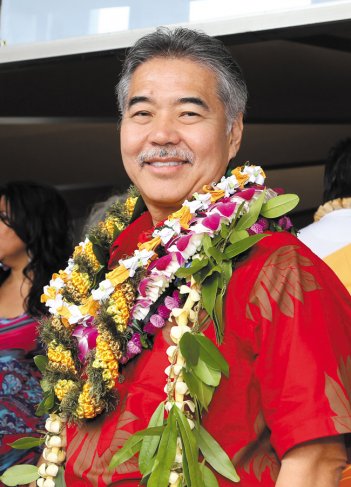Gubernatorial Contest By The Numbers
Numbers tell stories — among them that primary election day 2014 constituted a damning indictment of Hawaii’s democracy.
On Aug. 9, the primary election attracted 287,387 voters, 41.5 percent of the 697,033 who were registered. That meant that three out of every five of us couldn’t be bothered to go to the polls or to mail in an absentee ballot. We had better things to do.
Better than choosing a 1st Congressional District candidate from the seven Democratic aspirants for the open seat, better than choosing between Colleen Hanabusa and Brian Schatz for a U.S. Senate seat, better than taking part in the historic gubernatorial vote that toppled incumbent Gov. Neil Abercrombie.
History tells us that turnout will be better for the Nov. 4 general election, but not by much. Approximately 100,000 more of us will choose among David, Duke and Mufi; Charles and Mark; Brian and Cam; state legislative candidates; mayoral and council candidates; and candidates for the Office of Hawaiian Affairs, etc.
“But wait!” the reader exclaims. “It’s an off-year election. There’s no presidential contest on the ballot to attract voters to the polls.”
True enough. But 2008 and 2012 were presidential election years, and a Hawaii-born and largely educated candidate of color was on the ballot, a fellow named Barack Obama. That drew out the Islands’ registered voters. Right?
Nope. Hawaii’s turnout for Obama in 2012 was dead last, 51st, behind all the states plus the District of Columbia — a mere 44.5 percent of us cast a vote.
“Ah,” says the reader, “but by 2012 the bloom was off the rose with Obama. In 2008, we were there for him.”
Nope again. In both 2012 and 2008 the two-thirds of us who did vote voted for Obama. In 2008, as in 2012, however, Hawaii finished 51st in voter turnout, with 48.8 percent.
Let’s consider more tales of telling numbers — or better, murky tales, for these are told by poll numbers.
Website RealClearPolitics’ average of the three most recently published polls on Hawaii’s gubernatorial election has David Ige at 41.3 percent, Duke Aiona at 37.7, and Mufi Hannemann at 9.
All three of those polls, however, were conducted in September. Since then, Ige, Aiona and Hannemann have participated in approximately half of 14 scheduled debates or forums, at least four of which have been televised. That unusually high number of common appearances has to have moved poll numbers.
That, and negative advertising. For weeks now, negative television ads and mailers by PACs supportive of Republican Aiona have been marrying Ige to the unpopular Abercrombie. At the same time, PACs supportive of Ige have coupled Aiona with Linda Lingle and furlough Fridays.
So where does that leave the poll numbers in the race for governor?
At least within the margin of error — which means close, very, very close.
And it is still a three-way contest. Again, consider the numbers. To be sure, Hannemann has yet to break 17 percent in any of the polls since announcing his gubernatorial candidacy. But Aiona’s folks are chipping away at Ige. Ige’s campaign, in turn, is cutting up Aiona. No one’s touching Hannemann.
Does that mean Hannemann will make it to the 37-40 percent that will be needed to win a three-way race?
It’ll be tough. Only the numbers will tell.
dbboylan70@gmail.com






